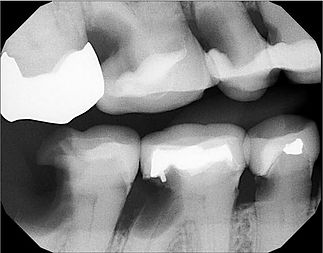
Dental Decay
Early diagnosis and treatment of dental decay—especially with the incorporation of Ai, prebiotics, probiotics, bioactive and biomimetic restorative materials—is a rapidly advancing conservative minimally invasive dentistry. Here's a comprehensive overview:
Early Diagnosis and Treatment of Dental Decay
Dental decay is one of the most prevalent infectious diseases in the world. The economic and human suffering cost is enormous. Understanding how decay develops, spreads, and contributes to overall oral infections is key to protecting your smile.
What is Dental Decay?
Dental decay, also called cavities or caries, is caused by acid-producing bacteria that feed on sugars and starches in the mouth. Over time, these bacteria form biofilm (plaque), which weakens and breaks down the tooth structure. If untreated, decay can lead to pain, infection, and tooth loss. These are the most advanced early detection and minimally invasive approaches.
Early Detection Approaches
1. Visual-Tactile Examination
-
Traditional method using mirrors and explorers.
-
Early white spot lesions on enamel may appear chalky and opaque.
2. Digital Radiography (Low-Dose)
-
Useful for interproximal and sub-surface caries.
-
Digital systems allow for enhanced contrast and lower radiation.
3. Laser Fluorescence (e.g., DIAGNOdent)
-
Measures fluorescence within the tooth structure.
-
Detects demineralization before cavitation occurs.
4. Transillumination (e.g., CariVu, DIFOTI)
-
Uses infrared or fiber-optic light to detect lesions.
-
Non-invasive and radiation-free.
5. Quantitative Light-Induced Fluorescence (QLF AOBIO)
-
Measures fluorescence loss to detect and monitor demineralization.
-
Useful for early caries and monitoring remineralization therapies.
6. Salivary Diagnostics
-
Identifies microbial load (e.g., Streptococcus mutans, Lactobacillus spp.).
-
Evaluates buffering capacity and pH.
-
Can assess caries risk and help customize preventive care.
-
Biofilm DNA test looks at the overall bacterial load
-
Phase contrast microscopy - evaluates biofilm health
Early Treatment Approaches
1. Non-Invasive Remineralization
-
Topical Fluoride: Varnishes, gels, and toothpaste strengthen enamel.
-
Calcium Phosphate-Based Products: e.g., CPP-ACP (MI Paste), bioavailable calcium/phosphate ions.
-
Nano-Hydroxyapatite: Biocompatible, enamel-like remineralization (found in some toothpastes).
-
Xylitol: Reduces S. mutans; may support remineralization.
-
Biorestoratives: Curodont, Crystl Care
-
Dietary Counseling: Reducing fermentable carbohydrate intake, increasing saliva stimulation.
Minimally Invasive Restorative Techniques
1. Sealants and Resin Infiltration
-
Sealants: For deep pits and fissures prone to decay.
-
Resin Infiltration (e.g., ICON): Arrests non-cavitated lesions without drilling.
2. Air Abrasion & Lasers
-
For micropreparation of early carious lesions.
-
Preserves healthy tooth structure.
Bioactive and Biomimetic Restoratives
1. Bioactive Glass Ionomers (e.g., Fuji IX, Equia Forte)
-
Fluoride-releasing.
-
Chemical adhesion to dentin.
-
Promotes secondary dentin formation.
2. Resin-Modified Glass Ionomers (RMGI)
-
More aesthetic and durable than traditional glass ionomers.
-
Continued fluoride release.
3. Bioactive Composites (e.g., ACTIVA BioACTIVE)
-
Release calcium, phosphate, and fluoride.
-
Moisture-friendly and self-adhesive.
-
Mimic the physical properties of dentin.
4. Calcium Silicate-Based Materials (e.g., Biodentine)
-
Used for deep cavities and pulp capping.
-
Stimulate the formation of reparative dentin.
5. MTA (Mineral Trioxide Aggregate)
-
Gold standard for pulp therapy and sealing dentin.
-
Highly biocompatible.
6. Prebiotics
-
AOXcare, powered by Protektin, is a powerful new category that blocks acid production and promotes a balanced oral microbiome.
The Future: Guided Enamel Regeneration
-
Biomimetic approaches under development aim to regenerate enamel using peptides and nanotechnology.
-
Curodont and Crystl Care are currently on the market.
-
AOXcare promotes a balanced microbiome in the absence of regular biofilm disruption.
6
Clinical Takeaway
Early diagnosis combined with non-invasive or minimally invasive intervention—including bioactive materials—supports a modern, preventive, and patient-centered approach to managing dental decay. This shift helps preserve more natural tooth structure and lowers the risk of the restoration-replacement cycle.